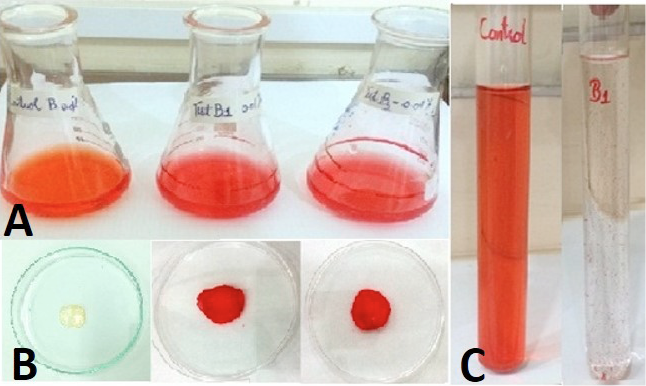A shows three flasks with nano-composite immersed in 0.015 mM solution of congo red dye. The flask on left side is control while in the middle and right side are test B1 and B2, respectively. B shows three petri plates with the nano-composite before treatment in the left plate and nano-composite separated from test B1 (middle plate) and test B2 (right plate) after 12 h showing adsorption of congo red dye. C shows solution from test B1 in the right test tube and the control (left test tube) of congo red solution after dye removal by flocculation (12 h treatment). The test B1 shows showing significant dye removal as compared to control. Now-a-days Congo red is not commonly used in textile and dye industry but in the presented work congo red is used because it is well characterized for its physical and chemical properties and therefore is used as a model for anionic dyes.
